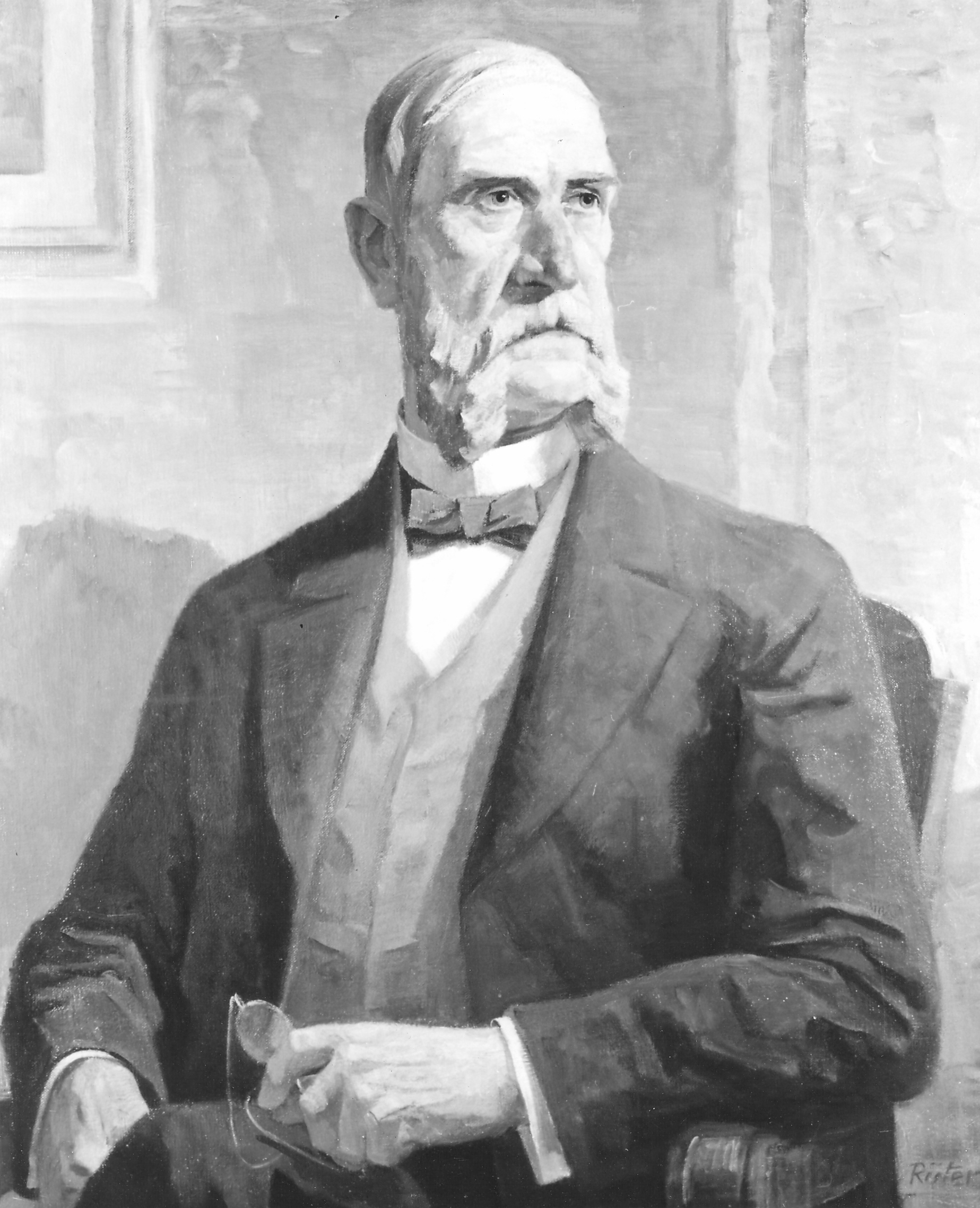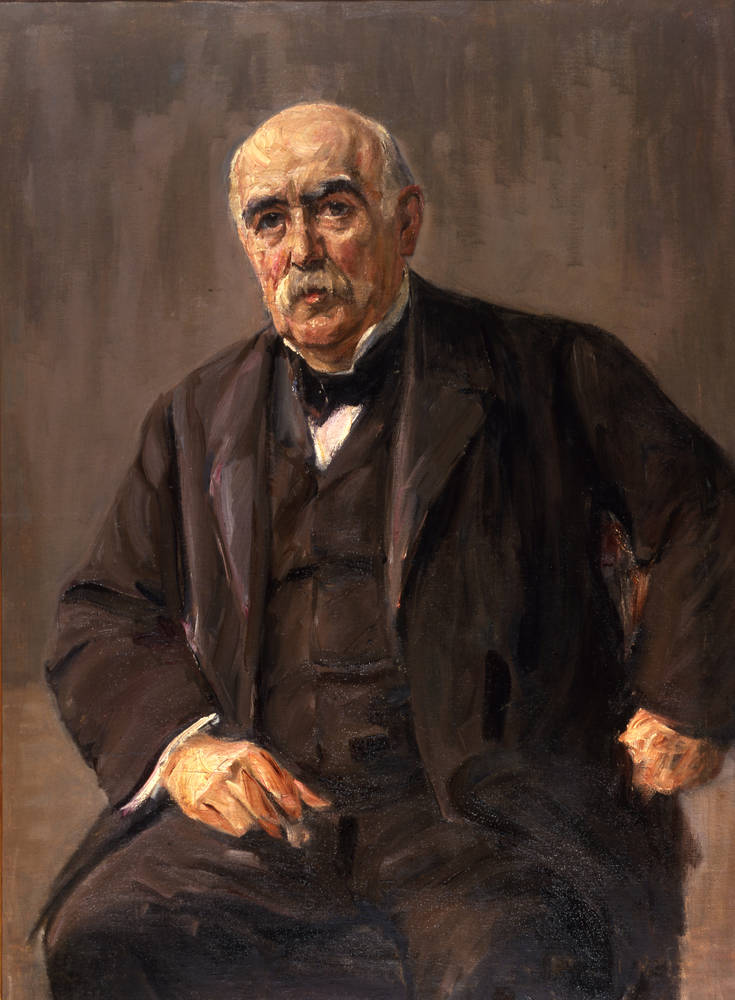|
Bank Of Bremen
The Bank of Bremen () was a German bank, founded in 1856 initially as a bank of issue, a privilege which it lost in 1889. In 1895, it was acquired by Dresdner Bank but the brand name survived until 2010. It had branches in Bremen's districts Mitte (city center next to Bremen Cathedral), Neustadt, Utbremen, and Bremen-Vegesack, Vegesack. History The Bank of Bremen was founded in 1856 by tradesmen and ship-owners and with a significant contribution of , also associated with the founding of the Bremen Exchange and Norddeutscher Lloyd. Its forerunner was the , founded in 1817. Together with the Frankfurter Bank (est. 1854), it was viewed as more independent than most other local banks of issue in Germany, which were generally under direct government control even when they were not government-owned. In 1895, Hermann Henrich Meier led the merger negotiations with Eugen Gutmann of Dresdner Bank. The merger was profitable for the Bremer tradesmen; the name Bremer Bank remained used ... [...More Info...] [...Related Items...] OR: [Wikipedia] [Google] [Baidu] |
Bremen
Bremen (Low German also: ''Breem'' or ''Bräm''), officially the City Municipality of Bremen (, ), is the capital of the States of Germany, German state of the Bremen (state), Free Hanseatic City of Bremen (), a two-city-state consisting of the cities of Bremen and Bremerhaven. With about 577,000 inhabitants, the Hanseatic League, Hanseatic city is the List of cities in Germany by population, 11th-largest city of Germany and the second-largest city in Northern Germany after Hamburg. Bremen is the largest city on the River Weser, the longest river flowing entirely in Germany, lying some upstream from its River mouth, mouth into the North Sea at Bremerhaven, and is completely surrounded by the state of Lower Saxony. Bremen is the centre of the Northwest Metropolitan Region, which also includes the cities of Oldenburg (city), Oldenburg and Bremerhaven, and has a population of around 2.8 million people. Bremen is contiguous with the Lower Saxon towns of Delmenhorst, Stuhr, Achim, Wey ... [...More Info...] [...Related Items...] OR: [Wikipedia] [Google] [Baidu] |
Domshof
The Domshof (''Cathedral Court'') is a town square in Bremen, north of the cathedral and the Marktplatz. The Domshof is used for markets as well as larger outdoor events, particularly May Day demonstrations. The Domshof is a trapezoid in width, long on the western side and long on the eastern side. Several streets radiate off the square (Schüsselkorb, Violenstraße, Seemannstraße, Sandstraße, Unser-Lieben-Frauen-Kirchhof and the Dompassage). Buildings on the square include Bremen Cathedral, the Town Hall of Bremen, Bremen Landesbank, the Deutsche Bank am Domshof, SEB Bank (formerly BfG), the Schifffahrtsbank and the Bremer Bank. The buildings around the Domshof are relatively uniform in construction, being made of sandstone (e.g. Bremer Bank) and dark red or clinker brick (e.g. the town hall and the Landesbank). The red Maintal sandstone of the Deutsche Bank and a white rendered building (Number 11) differ from the others. History Middle Ages and Reformation ... [...More Info...] [...Related Items...] OR: [Wikipedia] [Google] [Baidu] |
Banks Disestablished In 2010
A bank is a financial institution that accepts deposits from the public and creates a demand deposit while simultaneously making loans. Lending activities can be directly performed by the bank or indirectly through capital markets. As banks play an important role in financial stability and the economy of a country, most jurisdictions exercise a high degree of regulation over banks. Most countries have institutionalized a system known as fractional-reserve banking, under which banks hold liquid assets equal to only a portion of their current liabilities. In addition to other regulations intended to ensure liquidity, banks are generally subject to minimum capital requirements based on an international set of capital standards, the Basel Accords. Banking in its modern sense evolved in the fourteenth century in the prosperous cities of Renaissance Italy but, in many ways, functioned as a continuation of ideas and concepts of credit and lending that had their roots in the ancien ... [...More Info...] [...Related Items...] OR: [Wikipedia] [Google] [Baidu] |
Defunct Banks Of Germany
Defunct may refer to: * ''Defunct'' (video game), 2014 * Zombie process or defunct process, in Unix-like operating systems See also * * :Former entities * End-of-life product In Industry (economics), industry, product lifecycle management (PLM) is the process of managing the entire lifecycle of a product from its inception through the Product engineering, engineering, Product design, design, and Manufacturing, ma ... * Obsolescence {{Disambiguation ... [...More Info...] [...Related Items...] OR: [Wikipedia] [Google] [Baidu] |
German Companies Established In 1856
German(s) may refer to: * Germany, the country of the Germans and German things **Germania (Roman era) * Germans, citizens of Germany, people of German ancestry, or native speakers of the German language ** For citizenship in Germany, see also German nationality law **Germanic peoples (Roman era) *German diaspora * German language * German cuisine, traditional foods of Germany People * German (given name) * German (surname) * Germán, a Spanish name Places * German (parish), Isle of Man * German, Albania, or Gërmej * German, Bulgaria * German, Iran * German, North Macedonia * German, New York, U.S. * Agios Germanos, Greece Other uses * German (mythology), a South Slavic mythological being * Germans (band), a Canadian rock band * "German" (song), a 2019 song by No Money Enterprise * ''The German'', a 2008 short film * "The Germans", an episode of ''Fawlty Towers'' * ''The German'', a nickname for Congolese rebel André Kisase Ngandu See also * Germanic (disambiguatio ... [...More Info...] [...Related Items...] OR: [Wikipedia] [Google] [Baidu] |
Bank Of Prussia
The Bank of Prussia () was the central bank of the Kingdom of Prussia. It was originally founded by Frederick the Great in 1765-1766 as the state-owned Prussian Royal Bank ( or ). In 1847, it was reorganized as a formally private-sector entity and renamed the Bank of Prussia. It operated until , when it was succeeded by the newly created Reichsbank. Prussian Royal Bank Frederick II founded the Royal Bank on , but it soon ran into financial trouble and had to be granted a revised charter to issue banknotes on , which is why 1766 is often referred to as its founding date; it started operations under that new guise in 1767. The bank was located at Jägerstrasse 34-35 in Berlin's Friedrichswerder district, originally only on the ground floor of a building that had been erected by architect Johann Arnold Nering in 1690 as a home for the chief huntmaster of Brandenburg. Around 1786, the bank expanded into the whole building. The Royal Bank's equity capital became negative in 1806 f ... [...More Info...] [...Related Items...] OR: [Wikipedia] [Google] [Baidu] |
Manufactum
Manufactum GmbH & Co. KG (formerly ''Manufactum Hoof & Partner KG'') is a German retailer with nine full-sized stores in Germany and an online store that serves primarily Germany, Austria, Switzerland, and the UK. The main focus of the company are household and garden goods made with traditional manufacturing methods (thus "Manufactum") and materials. The company also sells cosmetics, apparel and shoes, computers, bikes, foodstuffs, books, bed and bath accessories, and furniture. History Manufactum was founded in 1988 by Thomas Hoof, former managing director of the German Green Party in North Rhine-Westphalia. In 2008, Heine Versand, a wholly owned subsidiary of Otto GmbH, took over Manufactum. In 2007, Manufactum had 400 employees and annual sales of 75 million EUR. Stores are currently located in Hamburg, Bremen, Berlin, Waltrop, Düsseldorf, Cologne, Bonn, Frankfurt, Stuttgart, Vienna, and Munich. In Germany, Manufactum catalogs have been enjoying almost cult-like status amon ... [...More Info...] [...Related Items...] OR: [Wikipedia] [Google] [Baidu] |
Commerzbank
The Commerzbank Aktiengesellschaft (shortly known as Commerzbank AG or Commerzbank ) is a European Financial institution, banking institution headquartered in Frankfurt am Main, Hesse, Germany. It offers services to private and entrepreneurial customers as well as corporate clients. The Commerzbank Group also includes the German brand Comdirect Bank and the Polish subsidiary mBank. As one of the oldest banks in Germany, Commerzbank plays a significant role in the country's economy. It is the largest financier of German foreign trade, with strong ties to the German 'Mittelstand.' In addition, it maintains a presence in all major economic and financial centers worldwide. Since its establishment in 1870, Commerzbank has undergone several changes. It was the first German banking institution to open an operational branch in New York City in 1971. Another milestone was the acquisition of Dresdner Bank in 2009. During the 2008 financial crisis, the Federal Republic of Germany became a ... [...More Info...] [...Related Items...] OR: [Wikipedia] [Google] [Baidu] |
Neoclassicism
Neoclassicism, also spelled Neo-classicism, emerged as a Western cultural movement in the decorative arts, decorative and visual arts, literature, theatre, music, and architecture that drew inspiration from the art and culture of classical antiquity. Neoclassicism was born in Rome, largely due to the writings of Johann Joachim Winckelmann during the rediscovery of Pompeii and Herculaneum. Its popularity expanded throughout Europe as a generation of European art students finished their Grand Tour and returned from Italy to their home countries with newly rediscovered Greco-Roman ideals. The main Neoclassical movement coincided with the 18th-century Age of Enlightenment, and continued into the early 19th century, eventually competing with Romanticism. In architecture, the style endured throughout the 19th, 20th, and into the 21st century. European Neoclassicism in the visual arts began in opposition to the then-dominant Rococo style. Rococo architecture emphasizes grace, Ornament ... [...More Info...] [...Related Items...] OR: [Wikipedia] [Google] [Baidu] |
Renaissance Revival Architecture
Renaissance Revival architecture (sometimes referred to as "Neo-Renaissance") is a group of 19th-century Revivalism (architecture), architectural revival styles which were neither Greek Revival architecture, Greek Revival nor Gothic Revival architecture, Gothic Revival but which instead drew inspiration from a wide range of classicizing Italian modes. Under the broad designation Renaissance architecture 19th-century architects and critics went beyond the architectural style which began in Florence and Central Italy in the early 15th century as an expression of Renaissance humanism; they also included styles that can be identified as Mannerism, Mannerist or Baroque. Self-applied style designations were rife in the mid- and later 19th century: "Neo-Renaissance" might be applied by contemporaries to structures that others called "Italianate", or when many French Baroque features are present (Second Empire (architecture), Second Empire). The divergent forms of Renaissance architect ... [...More Info...] [...Related Items...] OR: [Wikipedia] [Google] [Baidu] |
Dresdner Bank
Dresdner Bank AG () was a German bank, founded in 1872 in Dresden, then headquartered in Berlin from 1884 to 1945 and in Frankfurt from 1963 onwards after a postwar hiatus. Long Germany's second-largest bank behind Deutsche Bank, it was eventually acquired by Commerzbank in May 2009. 1872-1933 The Dresdner Bank was established on through the conversion of , a Dresden-based private bank founded in 1771, on the advice of banker Eugen Gutmann. The bank's founding consortium of investors consisted of (Leipzig), Berliner Handels-Gesellschaft (Berlin), (Frankfurt), (Frankfurt) and (Hamburg), with an initial capital of 8 million Thalers (24 million Marks) and 30 employees in Wilsdruffer Strasse in Dresden. Gutmann became chairman of the new entity's board and led it until his retirement in 1920. In the 1870s, the Dresdner Bank acquired smaller regional institutes and several banks. In 1881, it opened a branch in Berlin, whose activity quickly exceeded the nominal head office in Dr ... [...More Info...] [...Related Items...] OR: [Wikipedia] [Google] [Baidu] |






